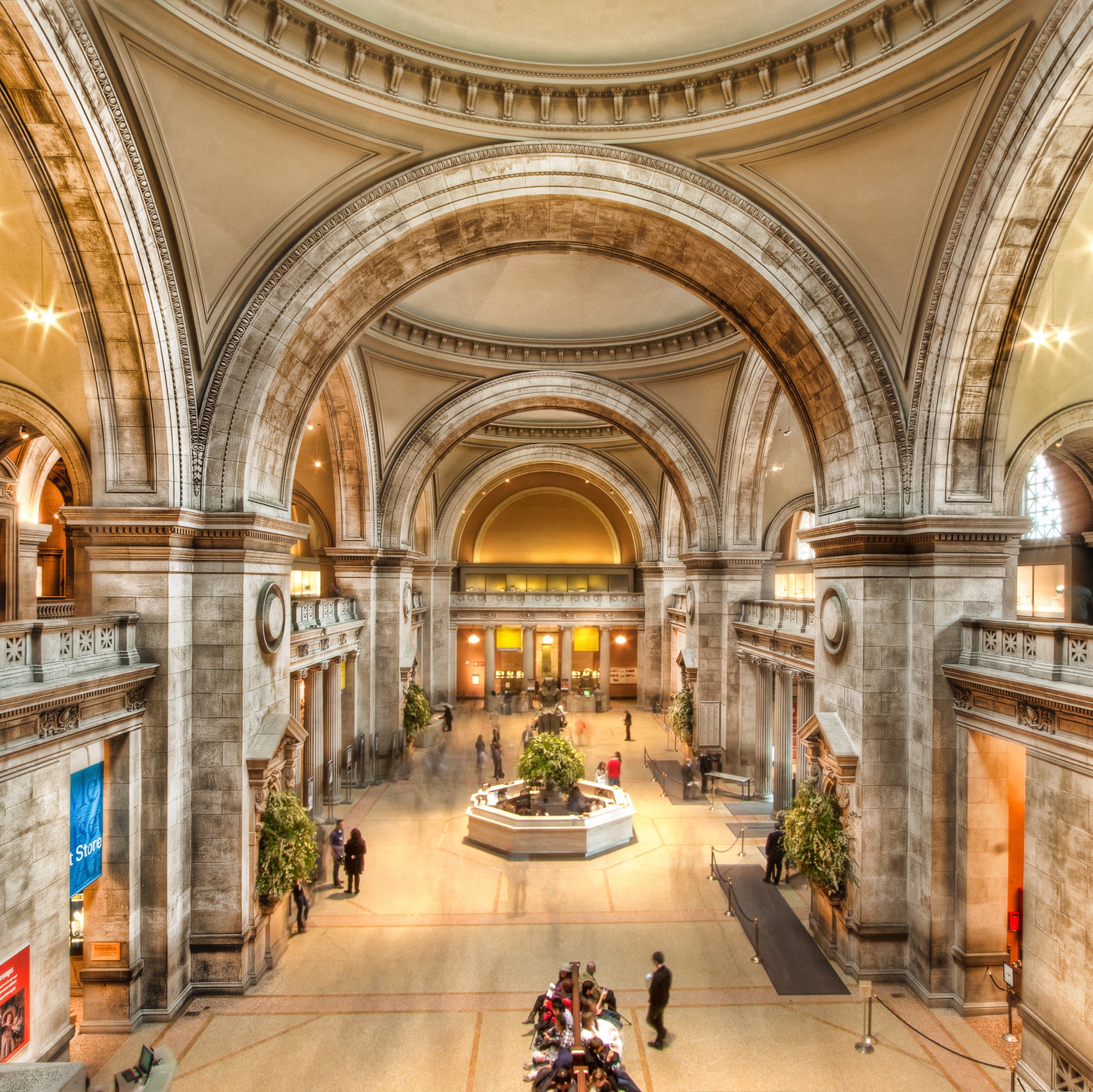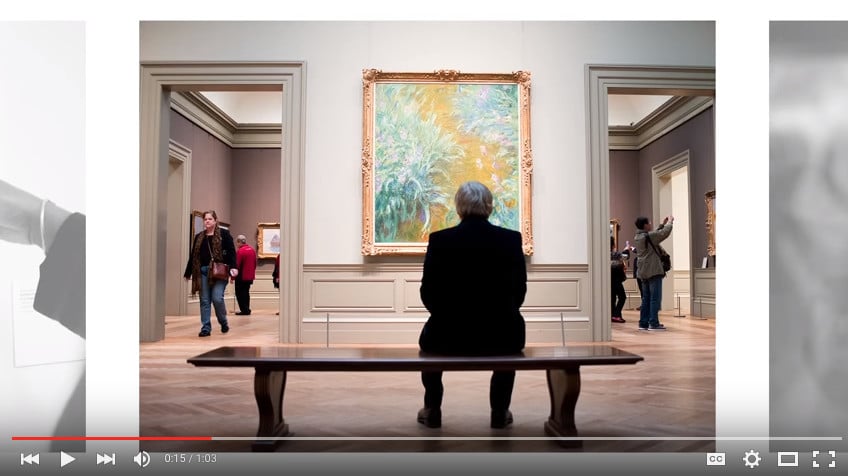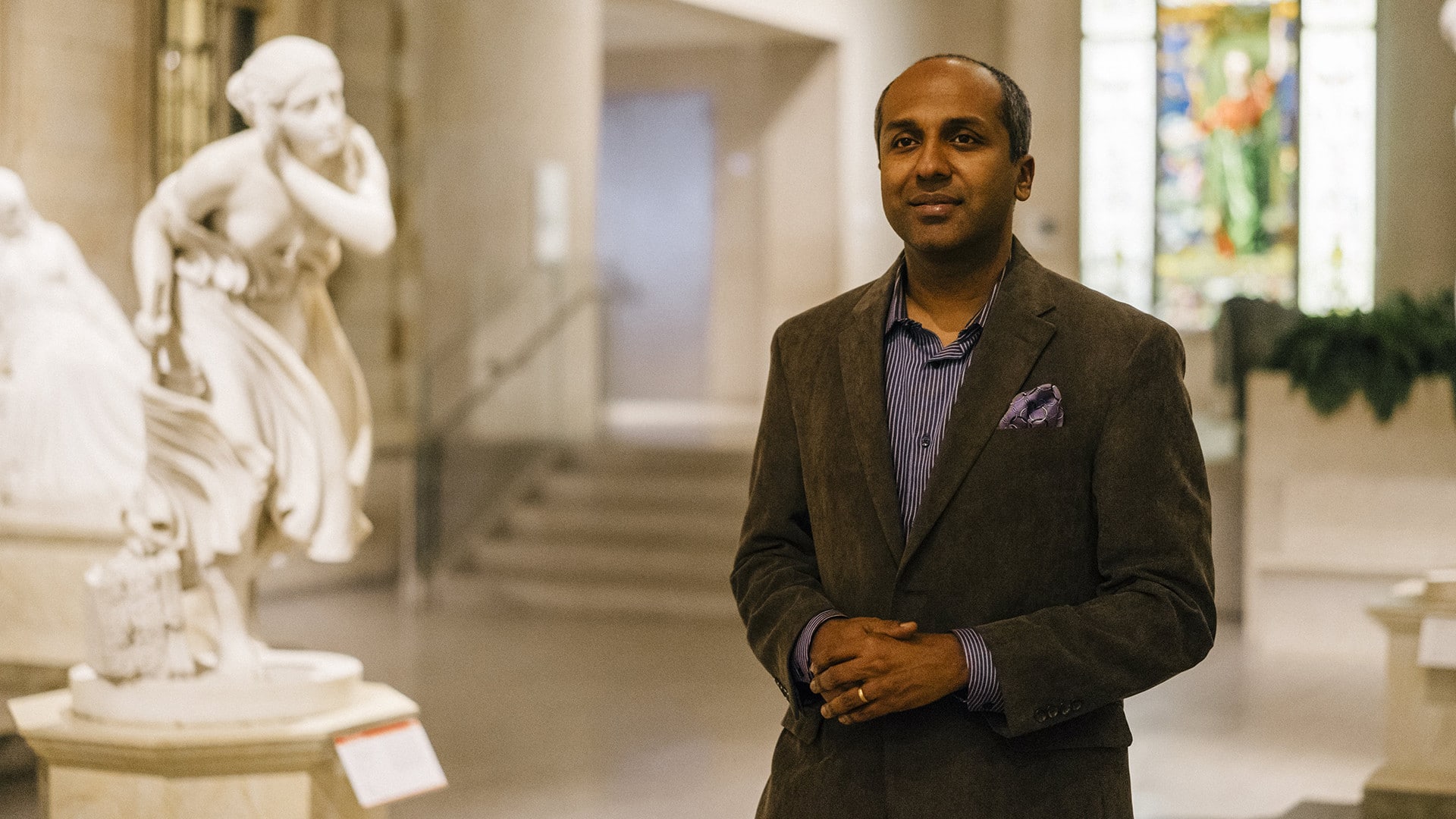Sreenath Sreenivasan is the first-ever Chief Digital Officer at the Metropolitan Museum of Art, a responsibility which he sums up simply: “I run a 70-person startup inside a 145-year-old company.” As the world has changed, so must museums, and Sree’s vision for the Met has ensured it will remain relevant for a very long time, thanks in part to the acknowledgment of the digital realm as well as its place alongside the history and art that preceded it.
This year, he was named one of Fast Magazine’s Most Creative People. At the Design Thinkers 2015 Conference, he told us about his history with the Met, how a museum must adapt to changing times, and why virtual experiences will never replace the real thing.
Transitioning from teaching at Columbia University to his new place at the Met:”I’d grown up near the Met and I never thought I’d leave Columbia, but it was a chance to tell the story of these million objects; that became an obsession. Everybody says they love the Met, but I was able to show them pictures of my Twitter feed over the years of all the things things I loved about the Met, so I didn’t even have to prepare any new stuff.
My family travelled a lot as my father was an Indian diplomat, but for a formative period [of my life], I went to school one block from the Met, and lived four blocks from it. If you love someone for 30 years, and the whole time it’s a one-way love affair, and she calls you, well, you have to take the call, and then with your wife’s permission, carry on. Which is what I did, and what we did, and that’s how I ended up here.”

Why we need museums in 2015:##
“I think the role of the museum is to get people interested in the world’s art, world’s history, and world’s heritage. Especially now, when we see so much of our heritage in peril, in the Middle East or other countries where things are being destroyed. I think that museums have a role in making people care about that history. The other role [of museums] is to teach young people about art, and connect with it.
I saw a Modigliani painting sold the day before yesterday at an auction, for the second highest price ever. It’s pretty amazing that we have the same model, the same artist, basically the same painting, and you can see it anytime you want. The one that’s been bought will now disappear from the public realm, but ours you can see from anywhere, at any time.”
There’s something about physical connections that are really valuable, and we don’t want to lose that.
On the advantages and disadvantages of how the Met operates:##
“At the Met we have an unusual situation. You can pay a dollar and go in and see everything;, there’s no paid exhibitions, or free ones. What we’ve learned is that one of the advantages of not charging for special exhibitions, as well as a disadvantage, is that we don’t do these blockbuster shows that everybody wants to come see. When your revenue comes from special exhibits, you try to make it bigger and bigger and bigger each time.
We’re able to do what we want, instead of what we have to do to get people in the door. It doesn’t mean we don’t do popular shows; we do this annual fashion institute and gala, for instance, with Anna Wintour, and next year is about Apple and fashion and it’s going to be awesome. That one’s really amazing. And it’s an example of how digital companies want to be involved in the art world, and that’s important. Last year the event was sponsored by Yahoo!, this year it’s sponsored by Apple. We’re talking to [Jonathan] Ive, who worked on the iPhone.”

The value of selfie sticks, and the galleries/museums that resist them:##
“The first thing we [at the Met] learned 20 years ago when we built our website, was that if you put art on it, people will still come into our physical space. By comparison , there’s something at the Grand Canyon called the Skywalk, which is this giant glass ‘U’ suspended 1000 feet above the canyon. And I have friends, and my kids, and others who were obsessed with this thing—they’ve seen every video, from every GoPro or every YouTuber. They’ve read everything. That doesn’t mean they don’t want to go—they want to go even more. And I’ll have to take them, but I’ll be cowering a hundred feet in the other direction!
People want experiences. Look at this conference. Why are 1600 people at a design conference? You can just read about design. You can find every YouTube video on almost all these speakers. There’s something about physical connections that are really valuable, and we don’t want to lose that.”












